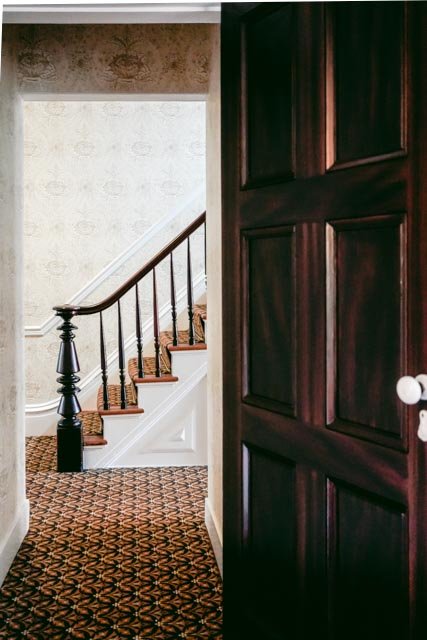Apple Tree House: A look into Jersey City History
The Apple Tree House, built in 1750, is a rare surviving Revolutionary-era reminder of Jersey City’s long and storied history.
Also known as the Van Wagenen House, Jersey City’s Apple Tree House is recognized as one of Jersey City's oldest and most historic homes. The orchards that once occupied the land surrounding the Apple Tree House is said to be where Generals Marquis de Lafayette and George Washington "dined under the shade of a tremendous old appletree" while planning the retreat during the American Revolutionary Wars.
The Origin Jersey City’s Famed Apple Tree House
Although first laid out in 1660, the first dwelling in the Dutch village of Bergen wasn't erected until 1688 when Gerrit Gerritsen purchased plots of land receiving land grants and rights to begin the charter of Bergen. He adopted the name Van Wagenen in honor of his hometown in Holland and became amongst the first Dutch Families who created the first European settlement in New Jersey.
During the first year of the revolutionary war, a young General George Washington was known to visit the area often.
The Tale of the Apple Tree House
The reputation and tales of the Van Wagenen Apple Tree were so widespread that in 1821 when a great gale uprooted the tree, people from the surrounding area came with the hope of returning home with a piece of wood, a souvenir of the historical importance of the location.
When Major General Lafayette returned to the area to celebrate the 4th of July in 1824, he was presented with a cane made of pieces of wood from the famed Apple Tree. The wooden cane, mounted in gold, bore the inscription: "Shaded the hero and his friend Washington in 1779; presented by the corporation of Bergen in 1824". The cane has traveled on, part of a permanent display at the Louvre in Paris.
The Families that called the Apple Tree House their home.
For decades following, the home remained in the family's possession, passed from Gerrit to his son Johannis, to his grandson, eventually on to Hartman Van Wagenen in 1835 (1790-1877), a prominent local politician and community member.
As founding members of the nearby Reformed Dutch Church of Bergen, the descendants of the Van Wagenen family are buried in the Old Bergen Reform cemetery.
Jersey City began to expand rapidly throughout the third quarter of the 19th century, and so the Van Wagenen properties began to be sold off and developed. The construction of Montgomery Street in 1870 provided the impetus for much of this growth.
A direct relative of the family, Eliza Jane Cokelat, bought what remained of the homestead lot with the Apple Tree House, living there with her husband William Cokelat, until her death in 1943 concluding 200 years of continuous family ownership. In 1947, Lawrence and Mary Quinn purchased the property to operated a funeral parlor on the premises until the mid-1980s. Among the notable figures prepared for burial on-site was Frank Hague, presumed the most famed Mayor in Jersey City history. In 1995 the City of Jersey City acquired the property to restore the house and its grounds.
Archaeological Importance of the Wagenen House
Between 2015 and 2016, Archaeologists excavated a small portion of the land that the Apple Tree House sits on. The archaeological data collected was attributed to advancing the knowledge of the area's early history and the colonial times of the village of Bergen. Left undisturbed were various areas of the property that are still believed to hold "a considerable archaeological potential."
A list of specific items recovered can be found at HERE
Throughout the year, free humanities lectures, history exhibitions, heritage celebrations and special events are held at the house. Check out our upcoming events below, and look at all out past lectures and exhibitions as well!
**Events are uploaded to the Cultural Affairs event calendar, as well as on the Apple Tree House Facebook event page











